
Each year, the world internet usage increases at an unprecedented rate, making it the most viable and effective platform to market any business of any sizes. However, successfully promoting a brand, product, or service through various online and digital platforms isn’t just a one-time thing, as one “must” create and deliver the right content on the right channels at the right time – regularly.
Whether it’s through web blogging or YouTube, individuals and companies alike that seek to stay relevant and fresh in the eyes of their target audience makes content posting on a weekly or even daily basis a priority in their strategy – not because they wanted to, but because it’s what the algorithm of these platforms require so.

Source: Giphy
But why?
Search engine algorithms are engineered to meet the needs of the users. Google, for instance, rely on bots and web crawlers so that they can identify and index any new content that can be included in the search results. Google do it knowing the fact that the majority of the users expect search results that are relevant and recent.
To put this case in perspective, the Content Marketing Institute reported that every second, 17 new blog posts were published in 2016. Since then, the trend has only seemed to go upwards.
While freshness is just one factor that Google takes into account when ranking webpages, they continuously update their algorithm to ensure that any content that appears on the top of SERPs is genuinely valuable and engaging for the searcher. The same principle can also be said on other platforms with search function such as YouTube and social media networking sites.
This pressure to produce content frequently has led to an issue which all digital marketers should worry about: Content Saturation.
What is Content Saturation?
Content saturation is when a particular niche is overly crowded with content pieces that even the most exceptional and fresh article or infographic would get buried deep in the search results.
The impact of content saturation is so significant that it has already manifested in the form of declining social media shares and backlink acquisition for the past recent years.
Despite being considered a vanity metric, social media shares are a signal of low-cost amplification and distribution reach, which means that high social shares = low content distribution cost and wide audience reach. What’s alarming though, is that the content marketing social shares have fallen from 8 in 2015 to just 4 in 2017, according to 2018 Content Trends from BuzzSumo.
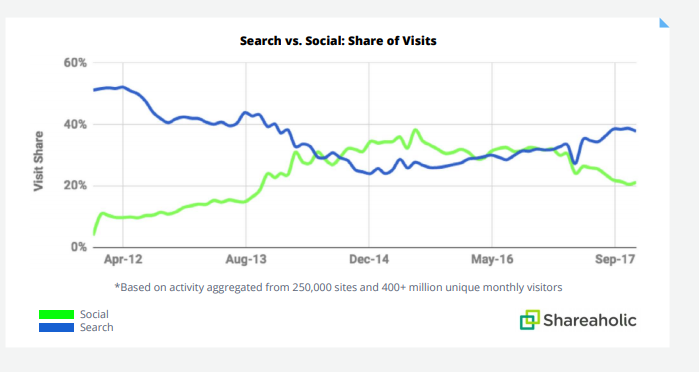
Recent data published by Shareaholic shows declining social referrals.
Source: BuzzSumo
BuzzSumo also found that social media shares for content tend to favor the best-in-class content based on this analysis:
- Top 1% of Articles – 2,409 Shares
- Top 5% of Articles – 343 Shares
- Top 10% of Articles – 62 Shares
This means that in order to be on the top 1% of articles on main social networks, the content must gain 2,409 shares, but only 62 shares to be in the top 10%.
A similar manifestation of content saturation is evident on the flatlining backlink acquisition. In fact, the BuzzSumo report found that the median number of backlinks in the sample of 100 million posts published in 2017 is zero! BuzzSumo reported that over 70% of all posted articles online don’t get an organic link, so getting even one successful backlink can already be considered a feat these days.
Except if you’re running a highly-authoritative website, it’s quite understandable that majority of content being posted online are not worthy enough to earn a single backlink. Fortunately, there are still some ways to overcome these issues and cut through the noise of the saturated digital landscape.
Here are some proven steps that you can follow to overcome the challenges of content saturation:
1. Find an Unsaturated Niche/Sub-Topics
Finding even the most spectacular content you created online is like finding a needle in a haystack if it covers a topic that serves the general audience, or that have already been discussed by countless of content creators for years now.
To put it in perspective, I tried to search “content writing tips” and Google delivered a whopping 829 million results. Unless your article is so valuable that many thought-leaders and industry peers linked and cited it in their own content, getting your content on top of this extremely saturated niche is next to impossible.
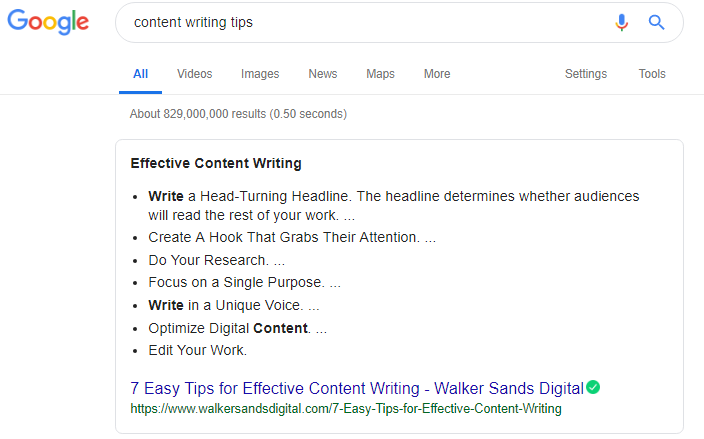
I narrowed the key search terms to “content writing tips st albans” and Google gave me 842,000 results, which is better, but can be further narrowed down if we make the topic relevant to an emerging customer base of the business, or more specific to a particular interest of the target audience.

Instead of creating more “me-too” content, what you should do is to find a particular niche or sub-topic in your industry that has not been covered deeply but can actually gain traction among your customers.
2. Create Evergreen and Research-Based Content
If you already have an established audience for your content marketing, there’s still hope in overcoming the declining social shares and backlinks, and that is through producing quality evergreen and research-based content.
Creating evergreen content is an effective way to attract a new set of audience for your business long after you have posted the content on your website and distribution platforms. Some examples of evergreen content posts are:
- How-to guides
- Beginner’s guide
- Buying guide
- Reviews
- Frequently Asked Questions
- Busted industry myths
- Best Books, Tools, Videos, Resources for Industry
- Interviews
- Case Studies
- Product Reviews
- History of “X”
For example, our post about brand building on digital platform is an evergreen content that was published in 2017 and still remains the top search result for the same search terms with over 69.5 million results in Google in 2019:

The topics usually covered in evergreen content are those that do not get out of date, so they always appear “fresh” and “timeless” to the audience. But while the topic will remain relevant for a long period of time, it’s still crucial to keep this type of content up-to-date, especially if it includes information that tends to change, such as statistics.
Producing your own research content is another way of battling the overly saturated niche in your industry, not mentioning the fact that they also help in building your authority and trustworthiness as a brand.
Compared to simple blogs, research-based content pieces are the ones that often earn organic links simply because they provide the audience with factual insights. Moreover, original research is an untapped opportunity, especially in the B2B sector where 74% of buyers consider original research as influential – yet only 37% of B2B marketers employ such tactic, according to CMI.
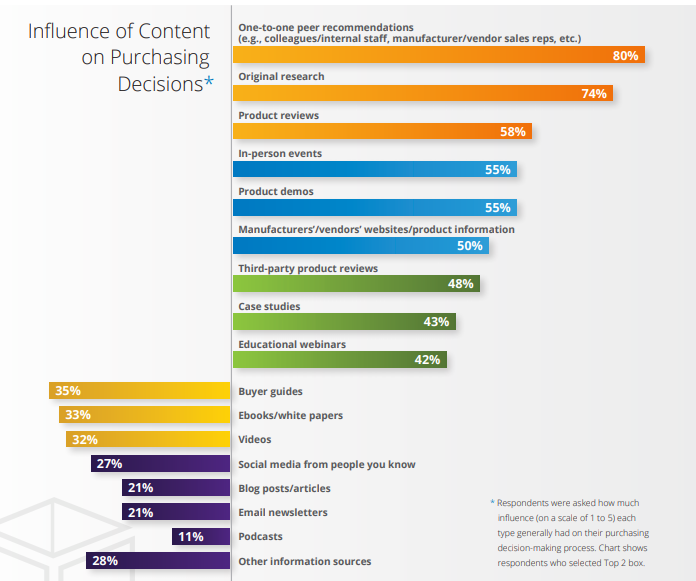
Source: CMI
While you may not immediately see these content pieces on top of the search results, ensuring that they are strategically crafted, content marketing- and SEO-wise, then it’s not far that these pieces will earn backlinks from an authoritative website and get shares from your core audience over the long haul.
3. Audit and Update Existing Content
As mentioned earlier, promoting your business online isn’t just a one-time affair; it requires continuous effort in order to generate results – and it applies, especially in content marketing. By thinking that each of the content pieces you produce is a stepping stone for something much bigger, you would be able to adopt a mindset that focuses on refinement and development rather than on hitting it one-time big-time.
Each content pieces you have or will ever create can be improved and evolved into more refined versions, which is why it’s important that you conduct a content audit at least once a year. Doing so will help you identify the pieces which resonated well with your audience, update them, and re-run them again – ultimately benefiting not only your business with the new audience but your existing core audience who find that content helpful and valuable.
4. Consistency and Quality vs. Frequency and Quantity
Many content creators and digital marketers think that creating content more often is the key to overcoming content saturation, but this isn’t always the case.
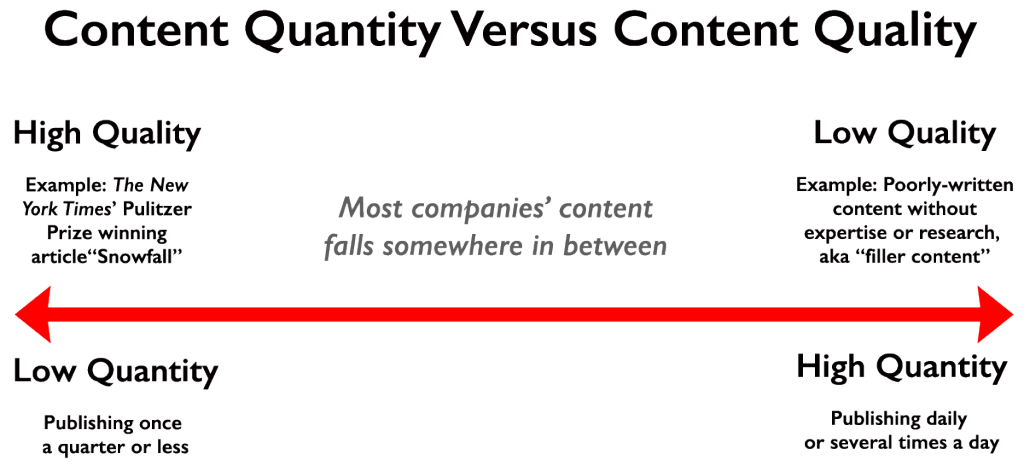
Source: Scoop.it
If your primary niche is already overcrowded with similar content pieces, then it’s best to focus your time on creating more impactful, highly engaging content consistently than to churn out more me-too content more frequently. Producing less content will also give the time you need to focus on equally or even more important aspects of content marketing: Distribution and Promotion.
The opposite principle can be followed if you want to tap an unsaturated niche, in which producing content (TAKE NOTE: USEFUL AND RELEVANT) at a faster rate will help you dominate that niche much quicker and effectively.
5. Leverage Paid Distribution
Evidently, the number of content creators and digital marketers willing to invest in paid platforms to expose their content to a larger audience has already increased just for the past 1-2 years – and for good reasons.
If you have been contemplating on adding paid distribution channels in your content distribution strategy, you might be able to finally justify your decision with the following statistics from B2B Content Marketing 2019 report from Content Marketing Institute and MarketingProfs:
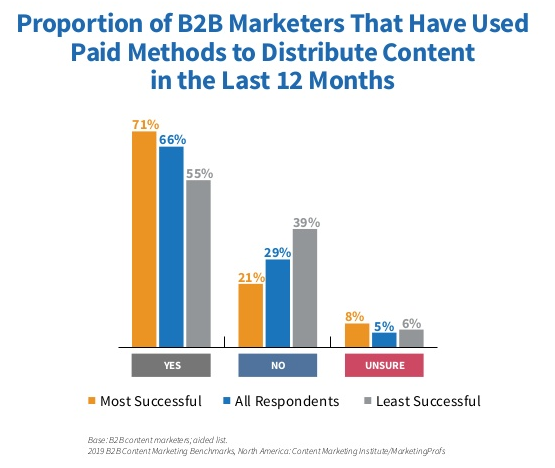
71% of the most successful B2B content marketers are using paid methods to distribute content, compared to only 55% of the least successful.
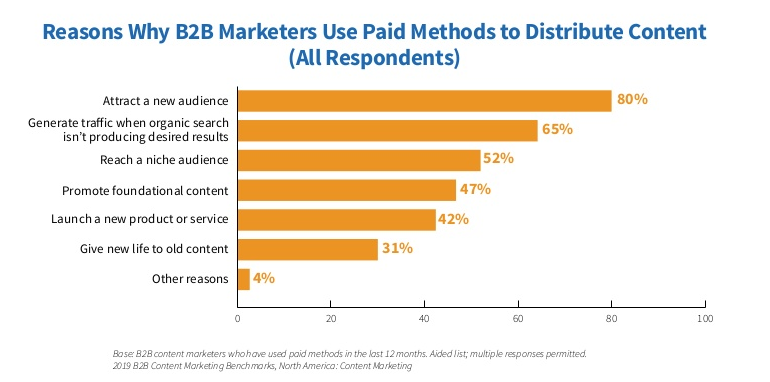
Source: CMI and MarketingProfs
80% report paid distribution as an effective way to attract a new audience, while 65% report it as an effective way to generate traffic when organic isn’t delivering.
Source: CMI and MarketingProfs
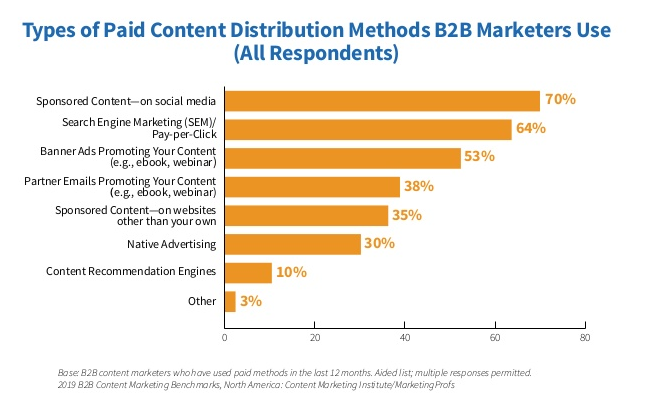
70% of marketers are using paid distribution on social media; 64% are using PPC or search engine advertising.
Source: CMI and MarketingProfs
Check out our post about Paid Content Distribution and Its Benefits to learn more about the different types of paid distribution platforms you can try and utilize today.
6. Improve Your Distribution Efforts
Delivering your high-quality content should always be of equal priority as when you are creating it. Although paid distribution channels are fast-becoming a norm, there are still some avenues where your target audience can discover your content, and where you can actually get highly-priced organic links – plus they can even be free of cost:
- Guest blogging on relevant websites.
- Press release platforms
- Topical content hubs
- User rating review sites
- Infographic submission sites
- RSS directories
Resource: Neil Patel of Quick Sprout offered a very cool guide from his own experience doing guest post marketing.
Aside from these platforms, leveraging mobile notifications and email can also help you build a loyal community separate from your social media profile followers that will most likely consumer and share your valuable content with their peers.
Conclusion:
Producing content that your audience will read is one thing, but producing a stellar content that can come on top of the saturated niche is another. Nevertheless, content saturation is not a problem that cannot be solved with strategic content planning and rigorous SEO efforts.
By creating high-quality content on a timely manner and delivering them on channels and platforms where your audience will likely consume them the most, then you’re on your way of toppling this issue which seems to only bother the industry for years to come.
Jomer B. Gregorio is a well-rounded expert when it comes digital marketing. Jomer is also known as a semantic SEO evangelist and practitioner. Check out our Digital Marketing Services today and let us help you in achieving positive and profitable results for your business.
